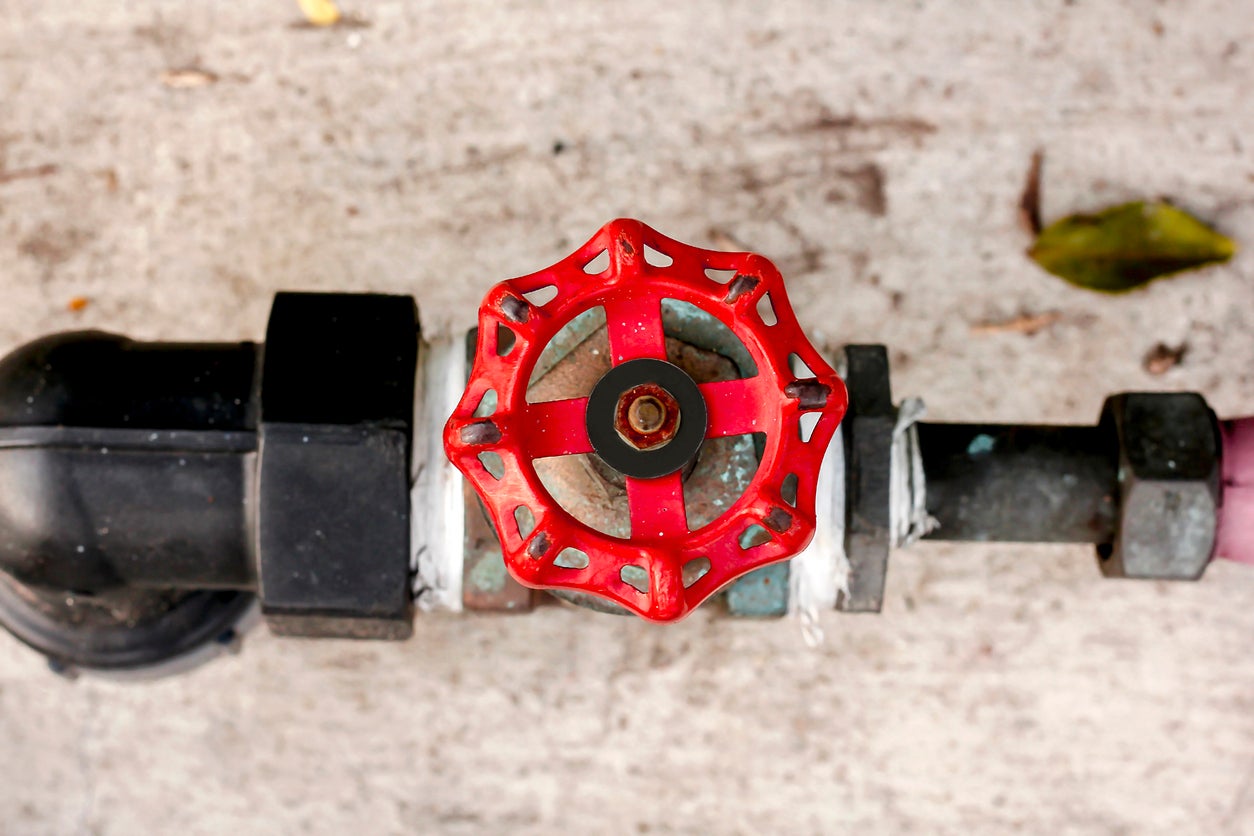Best Approaches for Rectifying Low Water Pressure in Your Home
Best Approaches for Rectifying Low Water Pressure in Your Home
Blog Article
Just how do you really feel about 10 Reasons for Low Water Pressure in Your House?

Low tide stress in your house can be a frustrating trouble, affecting everything from bathing to cleaning meals. If you're experiencing weak water circulation, there are numerous possible reasons and solutions to explore. In this guide, we'll talk about usual reasons for low water pressure and useful actions to address the issue efficiently.
Introduction to Low Water Stress
Low water pressure occurs when the circulation of water from your faucets, showers, and other components is weak than normal. This can make everyday tasks a lot more challenging and much less reliable. Understanding the sources of low water pressure is critical to locating the right remedy.
Typical Causes of Low Water Pressure
Faulty Pressure Regulators
Pressure regulatory authorities are responsible for keeping regular water pressure in your home. If they malfunction, it can cause low tide pressure or uneven flow throughout your home.
Municipal Water Supply Issues
Often, the problem exists outside your home. Community water supply concerns, such as main line leaks or upkeep work, can briefly decrease water stress in your area.
Pipeline Obstructions
In time, pipelines can become blocked with natural resource, sediment, or debris, limiting the flow of water. This is a common problem in older homes with galvanized steel pipelines.
Corrosion
Corrosion within pipes can cause leakages and reduced water pressure. Rust buildup can restrict water flow, particularly in maturing plumbing systems.
Just How to Detect Low Tide Stress
Evaluating Pipelines
Evaluate noticeable pipelines for indications of leaks, rust, or blockages. Take note of any type of unusual sounds, such as knocking or rattling pipelines, which could indicate concerns within the plumbing system.
Consulting with a Plumber
If you're incapable to identify the reason for low tide stress, think about hiring a specialist plumber to carry out an extensive evaluation. They can recognize underlying problems and advise proper solutions.
Inspecting Taps and Fixtures
Beginning by evaluating the water stress at different faucets and components throughout your home. If the problem is separated to particular locations, it might show localized problems.
DIY Solutions to Fix Low Tide Pressure
Flushing Water Heater
Sediment accumulation in the water heater can limit flow and reduce effectiveness. Flushing the tank occasionally helps remove sediment and preserve optimal efficiency.
Checking Pressure Regulatory Authority
Guarantee that the pressure regulator is functioning appropriately. Readjusting or changing the regulatory authority can aid recover proper water stress throughout your home.
Cleaning Aerators and Showerheads
Natural resources can accumulate in aerators and showerheads, decreasing water circulation. Eliminate and clean up these components regularly to improve water pressure.
Cleaning Clogs in Piping
For small obstructions, try using a plumbing serpent or chemical drainpipe cleaner to clear obstructions in pipes. Be cautious when utilizing chemicals and adhere to safety guidelines.
When to Call a Specialist Plumber
If DIY efforts fall short to settle the issue or if you suspect substantial plumbing troubles, it's ideal to look for help from a qualified plumber. They have the experience and tools to deal with complicated concerns securely and effectively.
Preventive Measures to Maintain Water Pressure
Setting Up a Pressure Booster
Think about setting up a pressure booster pump to enhance water stress in locations with continually reduced flow. This can be especially advantageous for multi-story homes or residential properties with high-demand components.
Monitoring Water Use
Bear in mind water usage habits and prevent overtaxing the plumbing system. Simple modifications, such as shocking showers and washing loads, can aid preserve ample water pressure.
Routine Upkeep
Schedule routine upkeep for your plumbing system to avoid problems such as corrosion, leakages, and clogs. Resolving minor troubles early can aid avoid more substantial repairs later.
Final thought
Dealing with low tide pressure can be irritating, yet identifying the underlying causes and executing proper services can bring back optimal circulation throughout your home. Whether it's cleaning up aerators, examining pipelines, or speaking with a plumber, taking positive actions can guarantee a steady supply of water for your everyday requirements.
HOW TO FIX LOW WATER PRESSURE IN YOUR HOUSE
When your plumbing system functions properly, you likely never think about the water pressure coming from your faucets, shower heads, or other water fixtures. If you experience low water pressure in your house, though, it can quickly cause problems for cooking, cleaning, bathing, and laundry. Learning how to fix low water pressure in your house can help you avoid frustrating situations and worsening plumbing issues.
When investigating why your home has low water pressure, call the plumbing professionals at Hutchinson to inspect your system, identify the problem, and perform necessary repairs. Our highly-trained plumbing system experts utilize the best tools and techniques available to resolve issues with your home’s plumbing system. Call today to schedule a service with our experts and resolve the low water pressure in your home.
Common Causes of Low Water Pressure
While learning about how to fix low water pressure in your house, it’s essential to understand the various causes of this issue. From plumbing system failures to issues with your water fixtures, there are many reasons for low water pressure in a home. The most common causes of low water pressure include:
Pipe corrosion: If you live in an old house, your pipes could be much older than you realize. Over time, most pipes corrode, especially those made from galvanized steel. Corrosion creates small holes in your pipes that allow water to leak as it travels to your fixtures, leading to low water pressure. Hard water: Hard water forms when water retains a certain concentration of mineral and sediment buildup. Hard water can exacerbate corrosion and reduce water pressure. Hard water remains one of the main culprits of clogged pipes. Clogged pipes: When a pipe blockage clogs your system, it restricts water flow. That’s why clogged pipes are a leading cause of low water pressure. Faulty fixtures: Components within individual water fixtures can experience isolated clogging and rusting that cause low water pressure. If you notice only low shower pressure or limited faucet flow, inspect your system for faulty fixtures displaying rusting, clogging, and other damage. Water line leaks: Your water supply usually comes from a community source connected to your home through a water line. Any leaking in this water line will reduce water pressure before it enters your home. If you share a water line with neighbors, they might also notice low water pressure due to this problem. Broken pressure regulator: The pressure regulator ensures the water flowing throughout your home remains at a psi of about 50. Damage or breakdown of this crucial component will reduce water pressure throughout your property. Closed valve: The water valve supplying your home must be fully open to enable proper water pressure. A partially closed valve will yield low water pressure and cause issues. 5 Ways to Fix Low Water Pressure
Check for Leaks
Depending on their severity, leaks are usually easy to identify as the cause of your low water pressure. Whether your basement floods overnight or you notice mold growth on surfaces near your pipes, leaks usually present noticeable symptoms. In most cases, you’ll need to call professionals to replace sections of damaged piping or seal water line leaks.
Clear Clogged Pipes and Drains
Clogs can occur in any part of your system at any time. In most cases, it’s difficult to resolve clogged pipes and drains without professional equipment and experience.
Hutchinson experts can perform a comprehensive plumbing system inspection to identify the clog’s source and remove obstructions from your pipes. With the help of advanced equipment, we can restore your home’s normal water flow and pressure.
Replace the Pressure Regulator
After identifying a faulty pressure regulator as the cause of your low water pressure, there’s nothing to do but replace the mechanism. Homeowners should never conduct their own replacement.
Attempting to replace a crucial component like your pressure regulator that attaches to your overall plumbing framework could cause unnecessary damage and worsen the situation. Instead, rely on professionals to replace your pressure regulator properly.
Repair or Replace Broken Faucets and Fixtures
If you notice water pressure issues in an individual faucet or fixture, you can solve the problem quickly. Depending on the type and location of the fixture, you can likely replace it yourself.
For homes with custom fixtures, you might need to special order new parts. In these cases, opting for professional replacements helps you avoid any mishaps that could leave your water feature dysfunctional for longer.
Install a Pressure Booster
Water pressure problems impacting your neighborhood or community at large might require more overarching solutions. If your neighbors experience low water pressure as well, you might need to integrate a pressure booster into your water supply line.
Pressure boosters upgrade the water pressure starting at the source. These mechanisms can provide water pressure benefits to any homes on the same supply line. Call Hutchinson today to install a pressure booster on your water supply line.
Call Hutchinson to Fix All Your Plumbing Issues
Low water pressure is just one of many plumbing problems that reduce home comfort and cause system issues. The top-rated professionals at Hutchinson offer comprehensive plumbing services, including system inspections, maintenance, and repairs.
https://www.hutchbiz.com/blog/2024/01/15/how-to-fix-low-water-pressure-in-house/

We hope you enjoyed reading our topic on Dealing with Low Water Pressure in Your Home. Thanks a lot for taking a few minutes to read our blog post. Loved our write-up? Please quickly share it. Let somebody else locate it. Kudos for being here. Return soon.
Call Today Report this page